If you’re tired of vending machine coffee and instant coffee packets, it might be time to give ground coffee a try. It’s simply the best way to enjoy a delicious cup of joe in the morning.
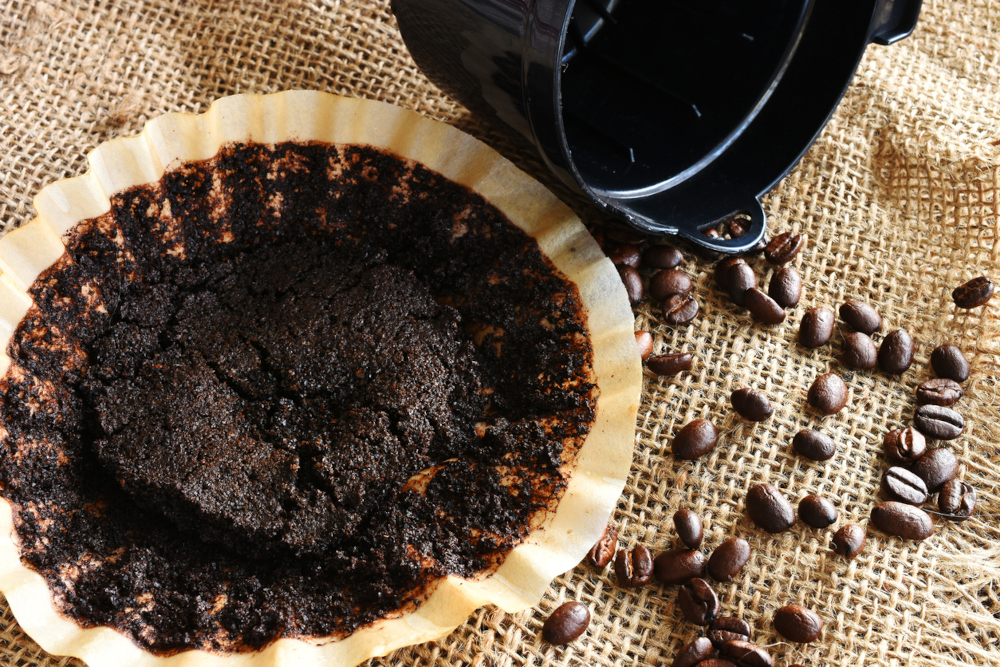
In today’s article, we will be going over all of the basics of ground coffee – what it is, how it’s made, what the different types are, and so on. And most importantly, how do you make a great cup of coffee with ground coffee?
Table of Contents
- What is Ground Coffee?
- What are the Types of Coffee Grounds?
- Tips for Preserving Ground Coffee
- How to Ground Coffee Beans at Home
- Coffee Grounds and Composting
- FAQ
- Closing Thoughts
What is Ground Coffee?
Ground coffee is simply coffee beans ground up into smaller pieces. This type of coffee is convenient because it can be made quickly and easily.
There are many different ways to enjoy ground coffee – from simple drip coffees to more complex espresso drinks.
Benefits
Ground coffee has several benefits over other types of coffee. For one, it’s much fresher if the beans are ground when you’re ready to brew.
This means that the flavor is more intense and vibrant. Ground coffee also allows you to customize your brew strength, so you can make it as weak or intense as you like. And finally, many people find that ground coffee simply tastes better than other types.
How Grounded Coffee is Made
Making ground coffee is a fairly simple process. First, you’ll need to measure out the desired amount of beans (generally two tablespoons per cup). Then, add the ground coffee beans to a grinder and grind until they are at your desired consistency.
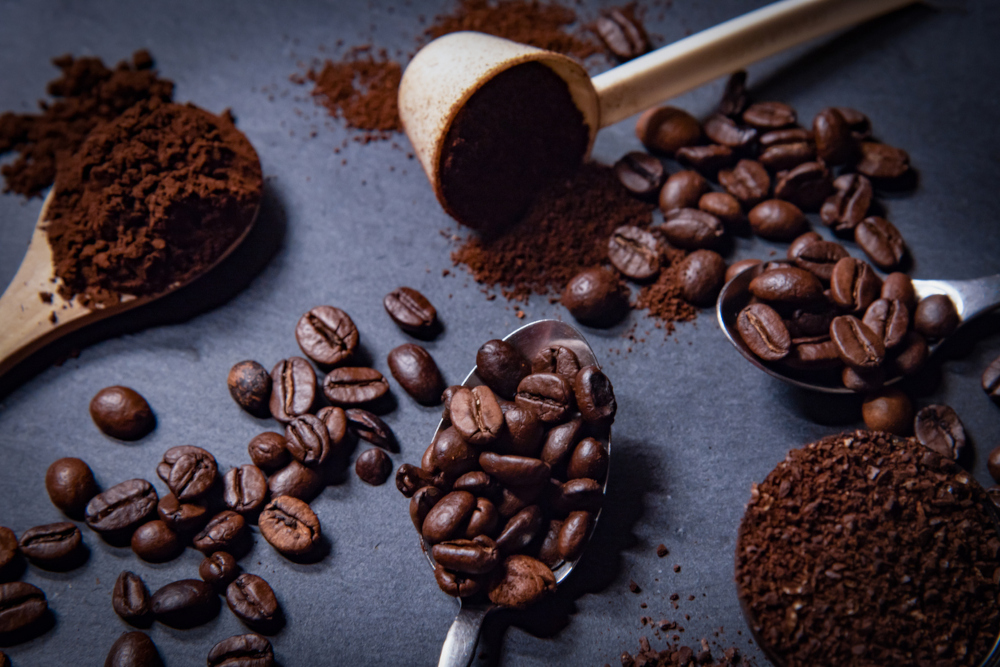
What are the Types of Coffee Grounds?
The way the coffee beans are ground plays an essential role in the taste and quality of the coffee.
- If the grind is too fine, the coffee will be over-extracted and taste bitter.
- If the grind is too coarse, the coffee will be under-extracted and taste weak.
The ideal grind size for ground coffee is somewhere in the middle – not too fine and not too coarse, although this is entirely up to the person making the brew.
That being said, here are the five different types of ground coffee based on grind sizes:
Coarse Grounds
Coarse ground coffee is generally used for brewing methods with a longer extraction time, such as French press and cold brew.
The larger grind size means that the coffee will take longer to extract, allowing more time for the flavors to develop.
Medium Grounds
Medium ground coffee is the most versatile type of ground coffee. It can be used for most brewing methods, including drip coffees, pour-overs, and espresso drinks.
The medium grind size means that the coffee will extract relatively quickly, but not so quickly that it will be over-extracted and taste bitter.
Fine
Fine ground coffee is generally used for espresso drinks. The smaller grind size means that the coffee will extract more quickly, necessary for making a good espresso.
Extra Fine
Extra fine ground coffee is only used for espresso drinks. It has a smaller grind size than fine ground coffee, which will extract even more quickly.
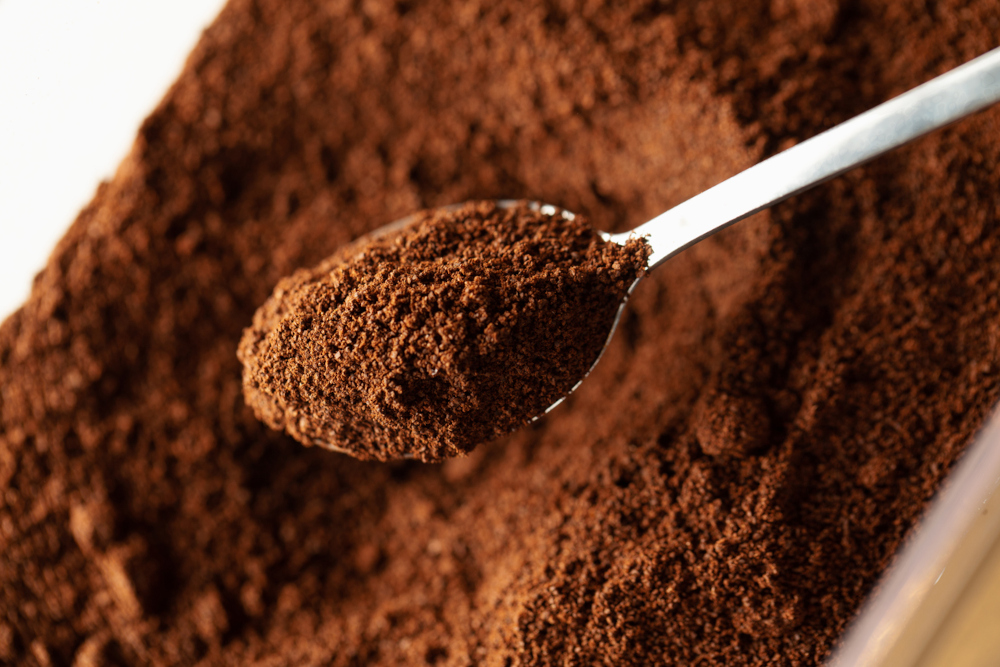
Turkish
Turkish ground coffee has the smallest grind size of all, to the point where the ground coffee has the same consistency as wheat flour.
It is only used for Turkish coffee, a particular brewing method that uses finely ground coffee.
Fresh Ground Coffee vs Pre Ground Coffee
If you’re off to the supermarket, you’ll probably notice how the coffee aisle is filled with different types of coffee.
However, if you’re a beginner, you’ll probably have difficulty figuring out whether to buy coffee beans and grind them yourself or just buy pre-ground coffee directly.
Well, the truth is that it depends. If you’re looking for convenience, then pre-ground coffee is the way to go.
But if you’re looking for the freshest possible cup of coffee, then you’ll want to grind your beans. Fresh ground coffee simply can’t be beaten when it comes to taste. The flavor is more intense and vibrant, and the coffee will be less bitter.
However, modern technology made it so that the difference is less noticeable, especially given how all the ground coffee bags are always vacuum-sealed to retain the product’s freshness.
Coffee Bloom
Whenever you read an article about how to brew certain types of coffee, you may stumble upon the term coffee bloom without knowing what it is.
Well, to put it simply, the coffee bloom is the foamy substance that appears on top of your coffee when you add hot water to your ground coffee.
The bloom is caused by the release of gases (primarily CO2), and it’s a good sign that indicates that your coffee is fresh.
Tips for Preserving Ground Coffee
Coffee beans are much easier to preserve than ground coffee, or at least it’s much easier to store them in a way that keeps the aroma intact.
However, if you’ve already ground your coffee, or if you opened the vacuum-sealed package of your pre-ground coffee, you’ll need to take some extra steps to preserve the freshness of your coffee.
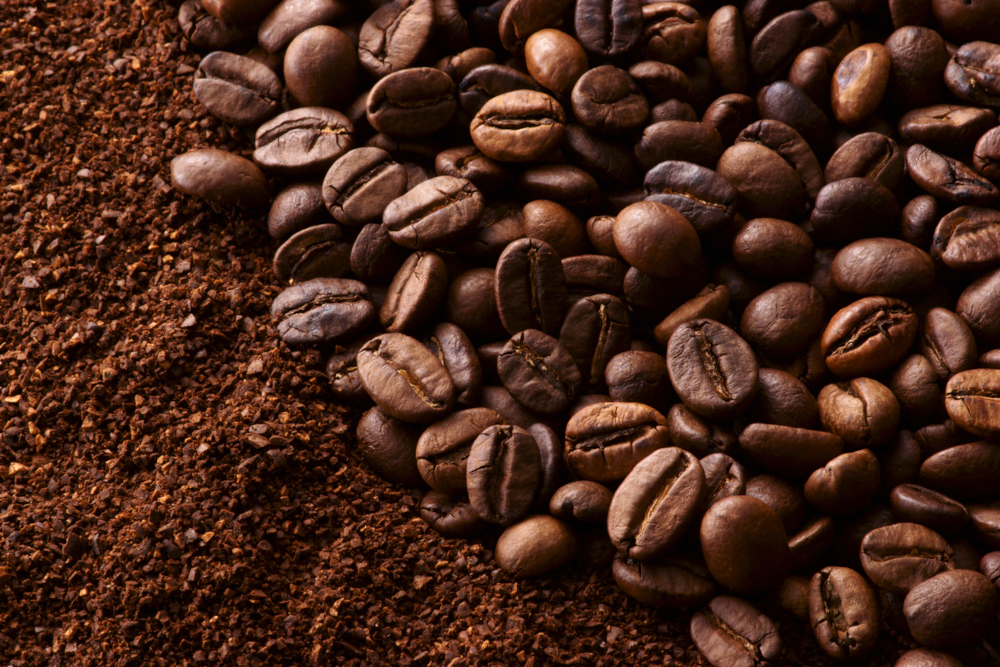
Dos
The first thing you need to do is make sure that your ground coffee is stored in an airtight container.
This will keep the coffee from going stale and losing its flavor. It’s also important to keep the container away from light and heat, as both of these things can cause the coffee to go bad.
Ideally, you should store your ground coffee in a dark cupboard or pantry.
If you’re not going to use all of the ground coffee at once, it’s best to portion it out into smaller containers so that you don’t have to open the main container every time you want to make a pot of coffee.
Don’t
Despite seeming like the ideal storage method, you should never try refrigerating or freezing your ground coffee, as both of these things will ruin the flavor.
You see, two things ruin ground coffee’s aroma:
- Moisture
- Oxygen
While oxygen exposure can be easily fixed with an airtight container (or if you have the means to vacuum-seal the bag again), refrigeration is the perfect place to introduce moisture to your ground coffee.
How to Ground Coffee Beans at Home
Since freshly-ground coffee is better, you’ll want to learn how to grind your own beans. The good news is that it’s not as difficult as it seems, and all you need is a good coffee grinder.
There are two types of coffee grinders:
- Blade
- Burr
The main difference is that blade grinders chop up the coffee beans while burr grinders crush them.
As a result, blade grinders produce unevenly-sized grounds, while burr grinders produce more uniform grounds. Burr grinders are generally more expensive than blade grinders, but they’re also more effective at grinding coffee beans.
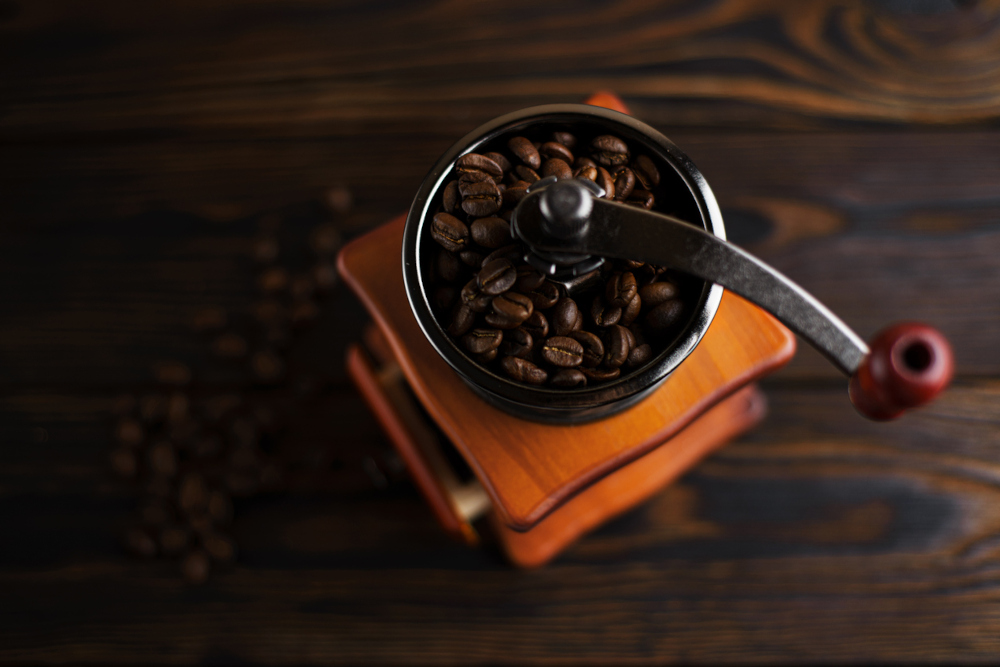
Best Machines for Ground Coffee
If you’re serious about going all artisanal on your coffee, then you’ll need to invest in a quality grinder.
There are many different grinders on the market, but not all are created equal. So, we’ve put together a list of the six best coffee grinders for home use, 5 of each type:
Blade coffee grinder
- Kaffe Electric Coffee Grinder – Best overall spice, nuts, and coffee grinder
- Mueller HyperGrind Electric Coffee Grinder – Best budget choice
- KRUPS Electric Coffee Grinder – Best portable coffee grinder
Burr coffee grinder
Check out some of the best burr coffee grinders:
- JavaPresse Manual Coffee Bean Grinder – Best manual burr grinder
- Cuisinart DBM-8 Automatic Burr Mill – Best overall coffee grinder
- KRUPS Precision Grinder – Best premium coffee grinder
Coffee Grounds and Composting
Once you’ve used your grounds for coffee to make your brew, you’ll be left with a fair amount of coffee grounds. Don’t just toss them in the trash – that’s a waste! Instead, compost them.
Not only is it good for the environment, but it will also help fertilize your garden or lawn. The easiest way to compost your ground coffee is to mix it with other green organic matter, such as leaves, grass clippings, or vegetable scraps.
You can also add a little water to help keep everything moist.
Then, just place the compost bin in a sunny spot and let nature take its course. In general, it takes about 3-4 months for coffee grounds to decompose fully.
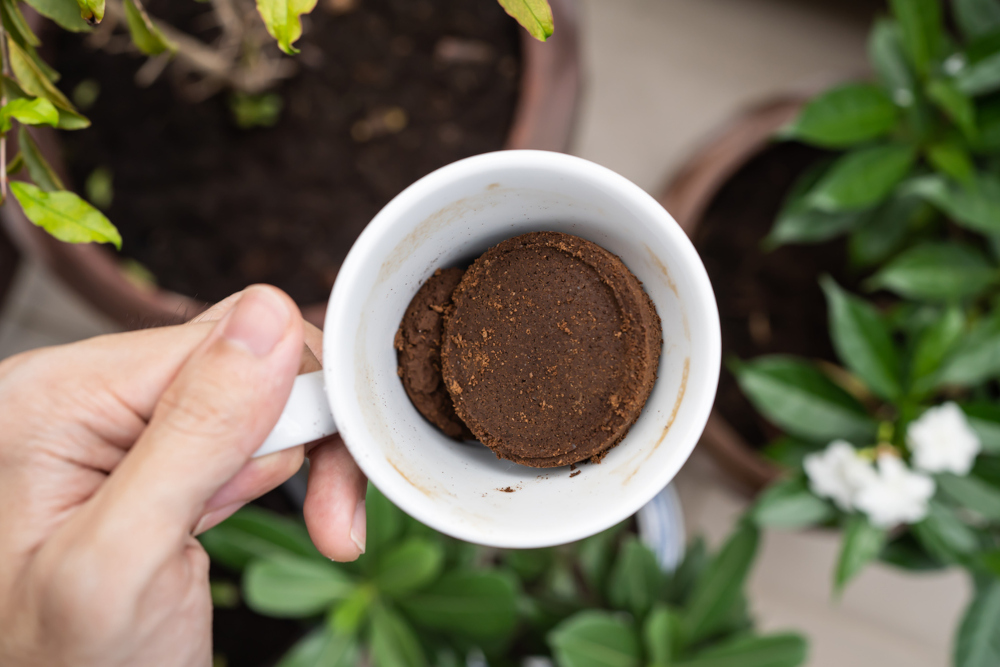
FAQ
Discover more information about grounded coffee:
How long is ground coffee good for?
Ideally, you should use your ground coffee within two weeks of grinding. After that, the quality will start to decline.
Can I reuse ground coffee?
While you could theoretically reuse the grounds, you won’t be able to make any actual coffee from them since all the flavors, caffeine, and nutrients have already been extracted during the first brew.
What’s the best way to store ground coffee?
Ideally, you should store your ground coffee in an airtight container in a cool, dark place. However, if you’re only going to be using it for a couple of days, you can store it in the fridge.
Can I make espresso with ground coffee?
Yes, you can make espresso with ground coffee – just be sure to use a finer grind.
Are ground coffee and instant coffee the same thing?
No, ground coffee and instant coffee are not the same. Ground coffee is made from roasted coffee beans ground into a fine powder, while instant coffee is made from freeze-dried coffee crystals.
Can you drink ground coffee without a machine?
Yes, you can drink ground coffee without a machine by adding hot water, which is also the method used to make pour-over coffee. For example, you can fill in hankie using coffee grounds and pour some hot water over them to soak it in. You then finish by slowly pouring the rest of the water until the container is filled with homemade pour-over coffee.
Is ground coffee good for plants?
It depends on the type of plant, soil composition, and other factors. However, some people believe that adding ground coffee to soil can help improve its structure and nutrients, which could, in turn, benefit plants.
Is fresh ground coffee better?
Yes, fresh ground coffee is definitely better than pre ground coffee.
What does coarse ground coffee look like?
It depends on the type of coffee bean and the manufacturing process. However, in general, coarse ground coffee will look like a bunch of small, black pieces.
What brand of ground coffee is best?
The best ground coffee is LifeBoost, followed by Volcanica, Tim Horton’s, Death Wish, and Valhalla Java.
Closing Thoughts
Our article on ground coffee should have taught you everything there is to know about this product, and we’ve also answered some of the most frequently asked questions about ground coffee.
So, not only should you now have a better understanding of how to store it and how long it will last, but we’ve also given you some ideas on what to do with your used coffee grounds once you’re finished with them.
Thanks for reading, and we hope this article was helpful.
Leave a Reply